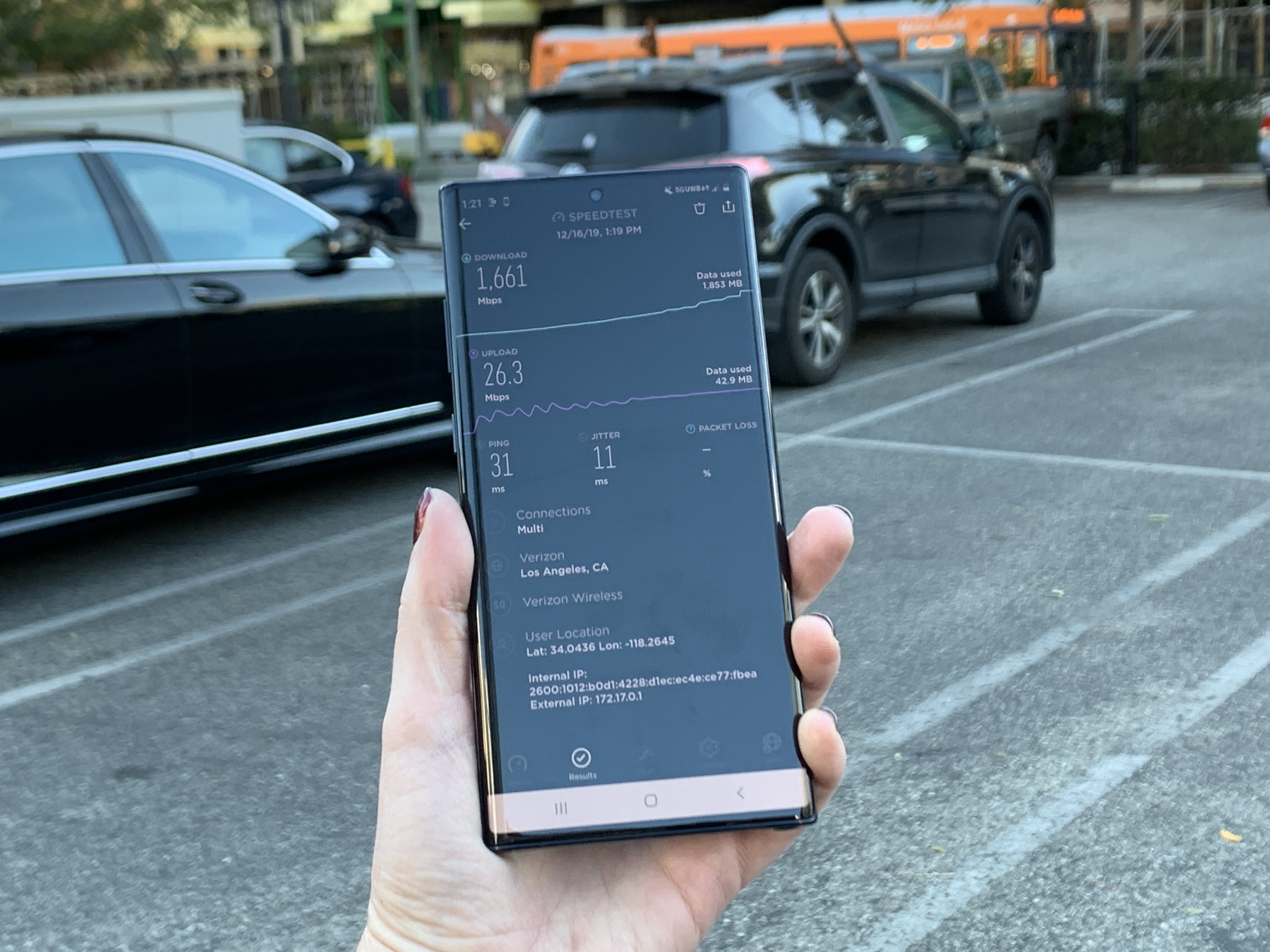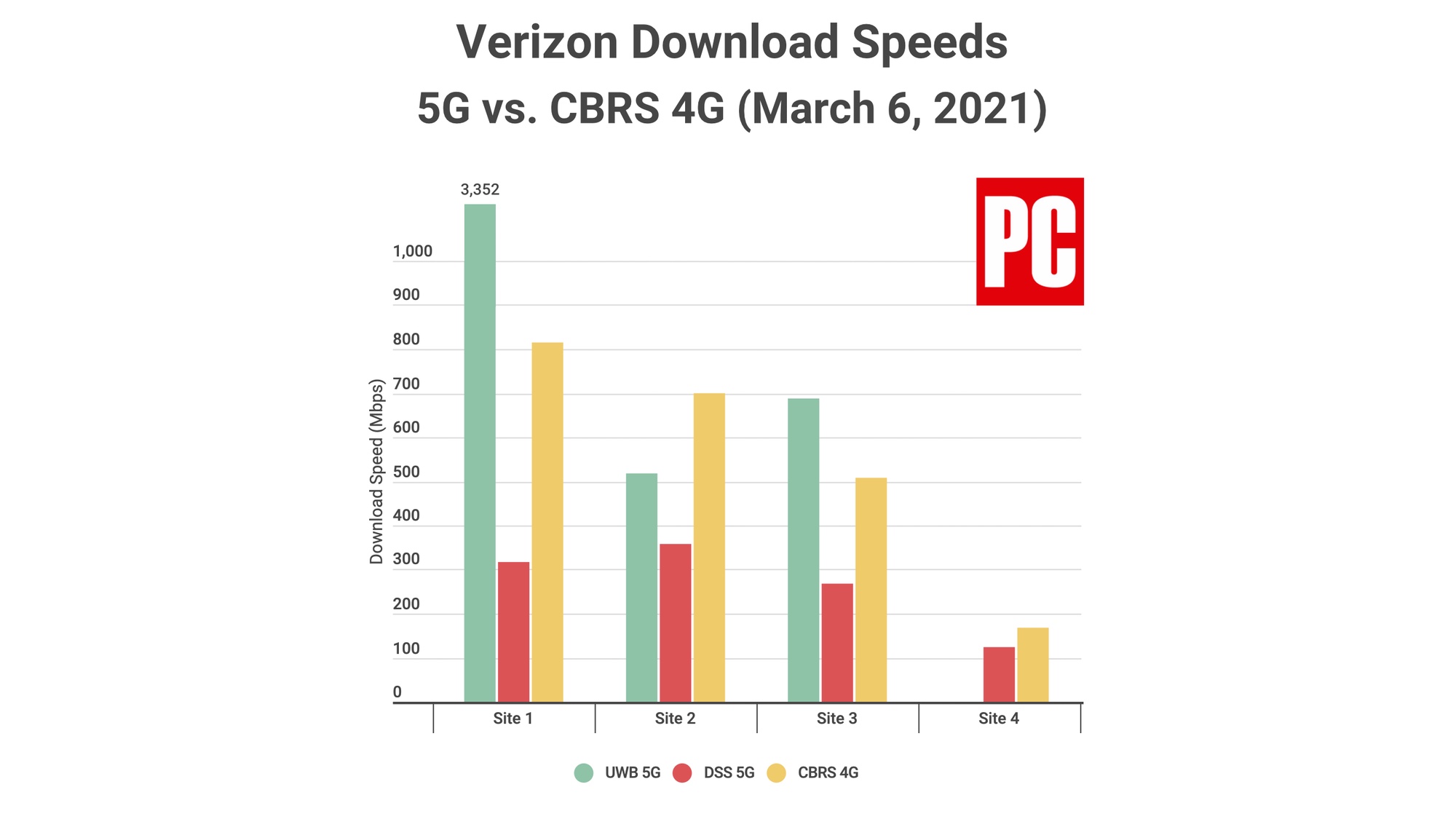Verizon’s new 4G network is so fast it puts most 5G to shame — here’s how
Verizon is using CBRS spectrum to bolster 4G performance in some areas, and it's really fast

How fast 5G speeds are these days commands most everybody's attention when it comes to wireless network performance. But Verizon is showing that there's room for improvement with 4G speeds as well — with the resulting performance boost topping 5G in some instances.
After snapping up CBRS spectrum — that stands for Citizens Broadband Radio Service — Verizon has been deploying it in certain areas to boost its 4G network. PCMag recently conducted some tests on this enhanced 4G in parts of New York and recorded some pretty eye-popping numbers.
- When is 5G coming to your area: Our ultimate guide
- Who is the best phone carrier overall?
- Plus: Google Pixel 6 secret weapon may have just leaked
In PCMag's testing, a Galaxy Note 20 Ultra hit top speeds of 815 Mbps at one test site over CBRS 4G. (For context, testing firm RootMetrics lists Verizon's media download speed for the New York City area as 72 Mbps during the second half of last year.) In that same location, Verizon's DSS-based 5G network hit a peak download speed of 358 Mbps.
Verizon uses DSS, or dynamic spectrum sharing, for its nationwide 5G network, as those signals are able to reach farther than millimeter wave-based spectrum. Verizon uses millimeter wave for its high-speed Ultra Wideband 5G coverage in more than 60 cities, and that continues to provide the fastest coverage, topping 3.4 Gbps in the same area where CBRS 4G was turning in speeds of 800-plus Mbps.

Still, the CBRS numbers are eye-opening, as it has a much wider reach than Ultra Wideband. Usually, you have to be in the line of sight of an Ultra Wideband tower to pick up coverage, whereas PCMag reports that CBRZ signals can reach for up to half-a-mile.
There's a significant drawback to CBRS, though — it's not widespread. A Light Reading report from last September says that Verizon's CBRS spectrum holdings cover 37% of the population, and most of that's concentrated in major cities and urban areas. So unless you're living in places like New York City, Los Angeles, Chicago and other major metropolitan areas, you're unlikely to see the improved 4G speeds.
There are a few other caveats to the improved performance, according to PCMag. You'll need a phone that supports LTE band 48 if you're a Verizon customer. You may also have to turn off 5G on your phone to get your device to work with the faster 4G.
Sign up to get the BEST of Tom's Guide direct to your inbox.
Get instant access to breaking news, the hottest reviews, great deals and helpful tips.
The benefits of CBRS bodes well for the C-band 5G spectrum that's supposed to come into play next year as wireless carriers continue to build out their 5G coverage. C-band spectrum promises faster speeds at wider ranges, and with CBRS sitting just below C-band, PCMag concludes that it's an encouraging sign for future improvements in network performance.
Philip Michaels is a Managing Editor at Tom's Guide. He's been covering personal technology since 1999 and was in the building when Steve Jobs showed off the iPhone for the first time. He's been evaluating smartphones since that first iPhone debuted in 2007, and he's been following phone carriers and smartphone plans since 2015. He has strong opinions about Apple, the Oakland Athletics, old movies and proper butchery techniques. Follow him at @PhilipMichaels.

